Project 1: Leadership Project
“Despite policies calling for equal “opportunities to learn”, minority students often do not have a chance to study as rigorous a curriculum as more privileged students, and they are also less likely to be taught by teachers with high levels of experience” (Zurawsky, C. 2004)
Problem and Rationale
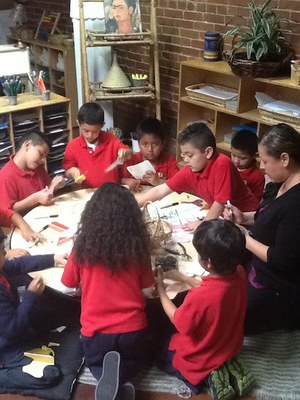
The AIM of the leadership project was by creating a protocol for on-site educator days at Para Los Niño’s (PLN) educators with students who are English learners will develop an understanding of how to implement project based learning (PBL) with a STEAM focus in their classrooms and a rationale for how this methodology may result in greater academic success for English learners. This leadership project addresses many equity and social justice issues. All too often ELL students, students living in poverty, and Latino students are receiving substandard education and are denied access to science, social studies, art, music and PE because of the belief that they need to spend more time learning the “basics”. Para Los Niño’s model of education debunks that myth and provides an alternative model that can be emulated by teachers and schools serving similar populations.
The primary problem is that ELL’s at various school sites across the state who are not engaging in a rigorous and integrated methodology for learning like PBL and are denied access to an effective teaching strategy that provides relevant, comprehensible, meaningful and contextualized learning that may result in improved critical thinking skills, higher academic achievement and an increase in scores on the standardized test. This may be a contributing factor of low academic performance among English Language Learners. There is also a lack of models for project-based learning with a STEAM focus at school sites with marginalized students (ELL’s, students in poverty, homeless students, and Latino students). Teachers and schools, especially those with ELL’s, who are interested in implementing project-based learning do not have access to schools that can provide a model of full-implementation.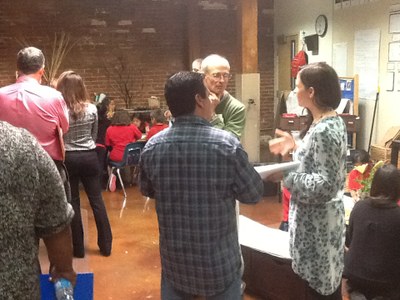
Related to the primary and secondary problems is the issue that PLN receives requests from various schools to come observe PLN teachers and students to deepen their understanding of PBL with an emphasis on STEAM and yet they do not currently have a systematic approach to meeting the requests by educators to visit the school and learn more about the teaching methodology and school culture.
The goal of the leadership project is to work with a leadership team comprised of the Superintendent of schools and acting principal, an Educational Consultant, and myself to create the protocol. We will also work with PLN teachers and the community (other schools). My role as a leader is to facilitate the meetings, guide the conversations and help articulate the purpose of the project.
Our short-term objectives are: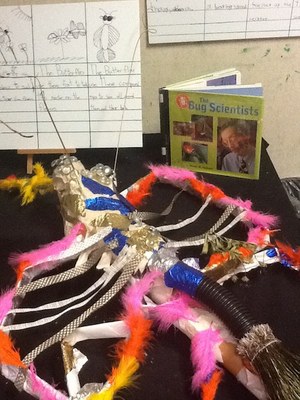
- Develop teacher leaders within PLB and in other schools
- Conduct 2-3 educator days/year on PBL with a STEAM focus
- Change pedagogy for participating teachers
- Increase student engagement for Ell’s at the participants’ school sites
Our long term-objectives are:
- Improve teaching methodologies for the Common Core and Next Generation Science Standards.
- Assist PLN in its vision to be a model for educational excellence
- Increase the number of Ell’s statewide that are exposed to PBL
- Increase the number of teachers of Ell’s that are proficient in PBL and STEAM
- Create learning environments where students will be critical thinkers that can produce new knowledge
Challenges and Changes
Our leadership team started with just 3 members. A few weeks before the April 4th PD, we enlisted the help of a 5th grade teacher. She became an integral part of the leadership team. She had a substitute teacher for the day and was able to facilitate the PD with us. She took pictures and recorded notes of the entire PD. This was extremely helpful in the debriefing process. Her presence also helps in keeping the project going next year.
We planned a PD (educator day) for April 4th early on. There were two opportunities, one in December and one in February, to host visiting teachers. During this time, there was no protocol in place. We used these opportunities to guide the planning for the April date (which would be the 3rd out of 4 visits for the year). The PDSA model was helpful in thinking about what was done, what needed to be changed and then attempting to implement change on a small scale in order to gauge its effectiveness. The PDSA cycle may be more applicable in subsequent years as we try to improve upon the existing protocol versus trying to create one.
One few limitation was that all team members were not familiar with the PDSA cycle and some team members took issue with the word “problem”. This project does not explicitly address a problem but rather serves as an effort to fulfill a part of the school's vision to become a model for educational excellence. It was helpful to me to frame the project as an answer to a problem because it helped me to stay focus and keep the project as small as possible. However, the term “problem” was an issue for some team members.
Main Activities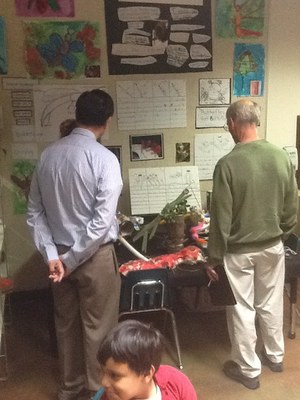
- Observe how visitors are informally received (PDSA cycle 2 and 3)
- Attend other educator days and study the various models
- Identify teacher leaders within PLN
- Organize a group of visiting teachers from various schools
- Host an educator day on April 4th to provide teachers with professional development on project-based learning. The objectives of the PD are that teachers will be able to:
- Identify and articulate the key elements of Project Based Learning.
- Articulate the importance of planning, room environment, and first hand experiences in setting the stage for a project based learning classroom.
- Understand that not only can PBL be done at schools serving marginalized students, but that ELL’s and other marginalized populations can excel in such an environment and result in improved educational outcomes for students
- Identify existing resources at their school site and initial steps that may be taken to transition their classroom to a PBL environment.

Outcomes and Data
We conducted initial surveys to gauge the participants’ level of familiarity with Project Based learning. The participants’ level of familiarity with PBL was overwhelmingly extremely low. However, their interest level was high. We also administered exit surveys, which indicated that the professional development was well received but that additional support is required in order for the teachers to implement project-based learning. The leadership team was already aware of the fact that more support would be necessary. However, the emphasis was on creating the model for the first year that could then be further developed in subsequent years.
Our focus for this year was mainly on creating the protocol. Therefore the PDSA cycles are about improving the educator day or PD offered to teachers. We conducted four PDSA Cycles. Each one was helpful in identifying small changes that need to be made in order to improve the process. We did not collect data in support of any of the long-term outcomes.
Hindsight
In hindsight, there are a few changes I would make. I would have presented the project proposal to the staff earlier on (end of first quarter) to be more inclusive. Most of the staff had no idea what the project was about until a week before the educator day. We may have benefited from the teachers’ input earlier in the project. One other change that we realized needed to be made is that there needs to be follow-through and additional support for the visiting teachers. This is the only way to measure if the project is succeeding in helping English Language learners outside of PLN. I still believe that our analysis of the root causes is correct. However, we need to further develop the plan for collecting data that gives us insight on not only the teachers’ opinions and reactions to the PD but indicates the effectiveness of the PD in improving learning for marginalized students.
Reflection as a Leader
 It is the end of the year and in many ways the project is just beginning. In the process of planning and implementing this educator day, we realized that there is a tremendous opportunity in front of us. With the transition to the Common Core State Standards and the Next Generation Science Standards, teachers and school leaders are grappling with how to teach in a way that adequately addressed these new standards. My personal belief is that with this transition comes an opportunity to move away from a test driven curriculum and towards an engaging, student centered and rigorous curriculum that could support diverse learners. But educators need to seize the opportunity and take an active leadership role in making the CCSS relevant and meaningful. PLN has the expertise and the human resources to develop this project to the point of becoming a model of professional development during a crucial point in educational history. I truly hope that the work continues and Para Los Niños is able to share their knowledge with other educators.
It is the end of the year and in many ways the project is just beginning. In the process of planning and implementing this educator day, we realized that there is a tremendous opportunity in front of us. With the transition to the Common Core State Standards and the Next Generation Science Standards, teachers and school leaders are grappling with how to teach in a way that adequately addressed these new standards. My personal belief is that with this transition comes an opportunity to move away from a test driven curriculum and towards an engaging, student centered and rigorous curriculum that could support diverse learners. But educators need to seize the opportunity and take an active leadership role in making the CCSS relevant and meaningful. PLN has the expertise and the human resources to develop this project to the point of becoming a model of professional development during a crucial point in educational history. I truly hope that the work continues and Para Los Niños is able to share their knowledge with other educators.
The leadership role I had during the project was very much as a facilitator. I was in the unique situation of being an intern and not an actual employee. Initially, my position seemed to serve as a hindrance to the project. I did not know the faculty very well and was unfamiliar with the nuances of the school’s demographics, culture and educational philosophy. Ultimately though, it proved to be extremely beneficial. I had the privilege of observing classroom teachers, coaches, and instructional leaders with an outsiders’ lens. I was forced to facilitate the process in a democratic manner versus utilizing a top down approach to the project. Also, I had the time and space to cultivate relationships and to focus the majority of my attention on the project.
The evaluations from the professional development were all extremely positive. However, we did not have the time to focus enough energy on evaluating the project in terms of the short term and long term goals. We did discuss in depth how to measure our goals going forward. Ideally, we would bring in a researcher from a local university to assist in collecting data and measuring our goals. PLN has relationships with several universities that could assist them with this.
Identity as a leader
In the beginning of the process, it was a challenge to be a leader in the typical sense of the word. I was new to the school and I was not even an employee. It was a challenge to position myself as a leader. Therefore, I observed (a lot), took notes, worked on cultivating relationships and slowly developing a quality project. By the end of the year, one of the team members who were initially most skeptical, is now a close ally and highly respected colleague. I will take this experience and knowledge with me as I assume a leadership role at a new school site later this year. It takes time to develop a level of trust and authentic relationships required to initiate an improvement.
The class by Professor Gomez on Organizational Improvement and the Principal as a Researcher class were both helpful in terms of developing a quality project. The practice with the PDSA cycle and the research we did in those classes helped to narrow the scope of the project and to clearly identify and articulate how the project would help marginalized students.
In my experience this past year, I have come to believe that the two critical components of leadership are vision and relationships. You need to have a clear vision of what you want to accomplish and you need to cultivate the relationships with people that are necessary to make the vision a reality.
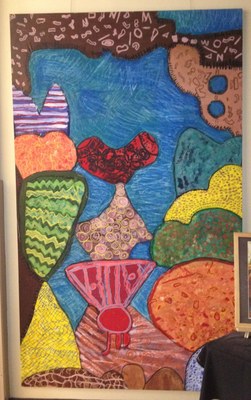
Connection to CSPEL
The project focused on assisting PLN to be a model of educational excellence, which is part of the school’s vision as well as providing ongoing professional development in the areas of Project Based Learning and STEAM, which both support the Common Core State Standards and Next Generation Science Standards. Both of these components afforded me the opportunity to work on standards 1 and 1 of the California Professional Standards for Educational Leaders.
The two California Professional Standards for Educational Leaders that were evident in my work on the project were standards 1 and 2.
Standard 1: A school administrator is an educational leader who promotes the success of all students by facilitating the development, articulation, implementation, and stewardship of a vision of learning that is shared and supported by the school community.
Standard 2: A school administrator is an educational leader who promotes the success of all students by advocating, nurturing, and sustaining a school culture and instructional program conducive to student learning and staff professional growth.
Future Implications
After the April 4th educator day, the leadership team met to discuss the future and sustainability of the project. We are currently working on a plan to further develop the project to the point that it is an integral part of Para Los Niños and to support Para Los Niños vision of being a model for Educational Excellence. I spent this past year working at Para Los Niños as an intern. Next year, I will be a coordinator at another school site. My role in the future of this project will be limited. However, we have outlined a few desirable goals for the next few years.
Through a fee-based model of professional development, the aim of the project is to improve educational outcomes for English Language Learners by improving teachers’ teaching methodologies for the Common Core and Next Generation Science Standards and developing teacher leaders within PLN and in other schools.
Year 1 Goals
- Strengthen the educational philosophy and practice within the school
- Present both the strategy and a clearly articulated pedagogy to all PLN stakeholders, which include staff, teachers, parents, administration, board members and community partners.
- Identify teachers leaders at PLN who will go into other schools to support teachers and begin to provide them with teacher specific PD
- Host an educational leadership symposium for educational leaders in public, charter and private schools.
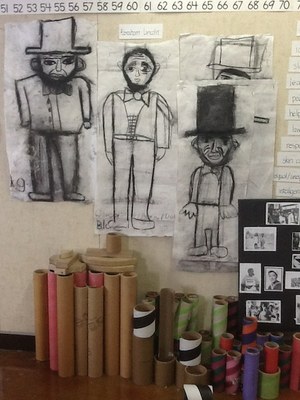
Year 2 Goals
- Continue hosting educator days
- Conduct a series of PLN led and co-designed seminars to develop teacher leaders to work with their peers around elements of our approach to PBL with STEAM focus
- Assist instructional leaders in integrating cognitive research and educational constructivist theory with classroom practice as they address the CCSS and NGSS.
- Develop teacher leaders both internally and in the greater educational community

